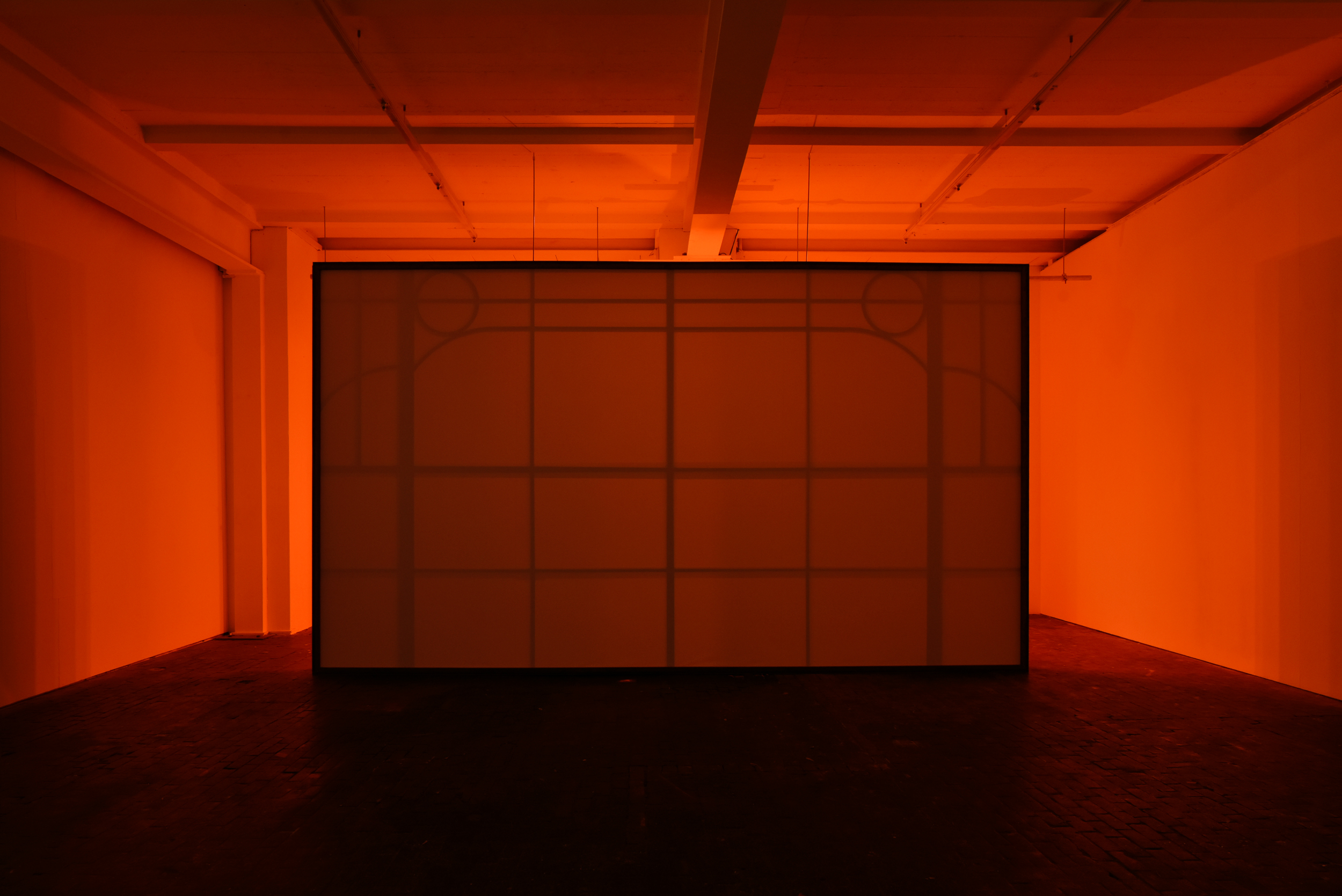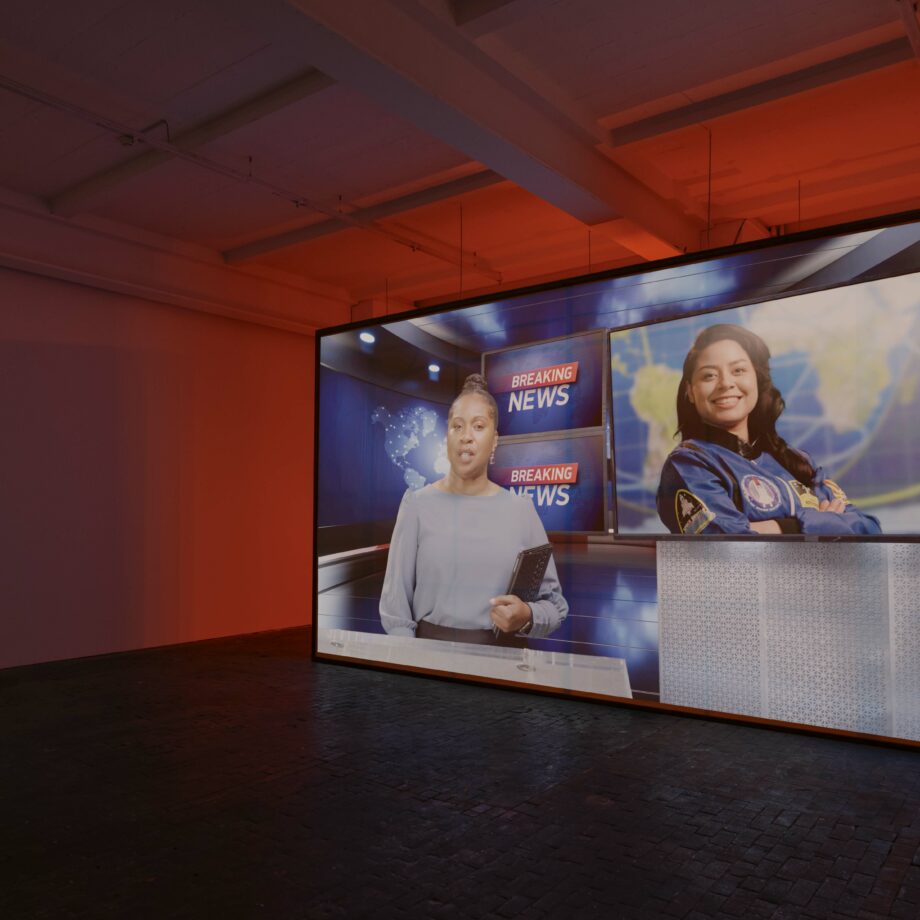
Imagine clicking through to a friend’s Facebook profile page, but instead of the expected pictures of them on holiday, the food they ate, their cute Cockapoo, or a rant about their boss, all you see is blue. Blue where their profile images are. A blue square instead of their opening post. Then page after page after page of blue.
It’s a colour richly deployed throughout art. It symbolised the divine in Ancient Egyptian craftsmanship. Picasso had a whole blue period following the death of a friend. Yves Klein developed his own blue, used across a series of monochromatic paintings and performances. Derek Jarman created his monologue film, Blue, featuring nothing other than 79 minutes of a single blue screen – the only colour he could see due to HIV-related illnesses – while he speaks over the top of death, war, AIDs, and speculatively dreaming about being an astronaut.
It is also a colour in technology. Resonating with Picasso and Jarman, the blue screen of death signifies a traumatic end. Then it was the brand colour of Facebook, Skype, Zoom, LinkedIn – and Twitter until Mars-dreamer Elon Musk began to carry out his own act of digital termination with its X rebrand and invitation to the far right.
It’s also a colour important to American Artist, who owned the Facebook page, which, between 2015 and 2016, turned blue. “It was an online performance where I was redacting information online for a year,” they tell me, and instead of uploading their life for online consumption, the artist printed out each image on their profile and replaced it with blue, then invited people who wanted to see the content to meet them in person to explore a physical photo album. It was an act which questioned identity, technology, representation, truth, and the idea of a window as a vantage into other possibilities.

In 2020, this reframing was further developed with Looted, a provocation for New York’s Whitney Museum of American Art. For 30 seconds at sunrise and sunset, every single image on the museum’s digital archive page was replaced with a square of photographed timber boarding, as if the whole page became a post-riot replacement of broken windows.
“I was interested in someone stumbling on it and not being sure how to engage,” they explain, “it was a critique of the museum, what does it mean to limit access to all the materials? I was playing out their worst fantasy, what if everything in the museum was stolen?” With over 2,000 items having recently been stolen from the British Museum, allegedly by an untrustworthy curator, it is possible that some museums might not notice such loss, but for anybody who opened the Whitney website at the perfect moment, it was very noticeable.
Looted was an act of institutional critique, but also a provocation to the visitor to question and clarify what is held in a museum, and also how we read through the window of a screen. “I’m interested in artwork that doesn’t look like what you consider artwork,” American Artist tells me at Geneva’s Centre d’Art Contemporain, where they have just unveiled their new work Yannis Window – which very much looks like an artwork.
It is part of the Biennale de l’Image en Mouvement 2024, an event dealing with moving image beyond screens on a wall or projections into the void. As a platform for new works, it is dedicated to immersive and new modes of exploring video and film; this year’s edition features: a video game from Danielle Brathwaite-Shirley, AI cars from Lawrence Lek, an investigation into electronic waste from Formafantasma; and semi-generative digital life from Interspecifics. American Artist’s response at first reads as one of the simpler installations within the galleries, appearing as a large rectangular projection screen, but a deeper sculptural quality emerges.
The room-filling, beautifully crafted wooden frame has depth and a sense of importance as three video works sequentially loop upon it. Between each, the projector dims, and rear lighting reveals arts and craft architectural detailing within its form, a structural domestic aesthetic that dissipates once the next film starts up. It is a quotation from Octavia E. Butler’s 1993 science fiction book Parable of the Sower, set in a 2024 in which the United States’ society has destabilised due to climate change, wealth inequality, and corporate greed – imagine that.
“In the book,” the artist tells me “a family that used to be wealthy but are now quite poor own a home with a window that is also a TV screen playing into the neighbourhood.” American Artist has extracted this detail from Butler’s novel and expanded it, creating a series of imaginary films which speak to the concerns of the story, Butler herself, and opening a series of twists from the source text. One of the framed videos is a monologue based on a character in Butler’s novel, Christopher Donner, a presidential candidate, which American Artist presents through a made-for-TV campaign video.

“We know there’s this guy running for president, but we don’t know what he looks like, we haven’t seen his campaign,” American Artist says of the fictional Donner, explaining that he folded real-world references into his spin-off character: “I was looking at figures that I felt had a similar presence – I was thinking of Kanye West, who ran for president, I was thinking of Chris smalls, who led the Amazon Labour Union.” One characteristic of Butler’s candidate that American Artist emphasises in his film is that “he is extremely anti-space, one of his campaign points is that he’s critical of the desire to leave the planet.” The film ends with a political sign-off: “I’m Christopher Donner, and I approve of this message.”
In just a few minutes we learn a lot of Donner, but information on American Artist can be harder to come by, partly because they are almost un-Googleable. Having legally changed their name in 2013 to test how our online identity exists when a whole system of cataloguing and recognition is broken by pushing against the normative, traceable system. “I was interested in that duality, or opacity, and the inability to be recognised in certain contexts or certain systems,” the artist explains of the decision. It is, however, a unique name which he says is “hard to forget, but within the context of the internet, it just disappears.” They say that the name-change is not an artwork in itself, but leads to endless new experiences, complications, and humorous situations, but more deeply “challenges the canonical understanding of who gets to be an American artist, but also, what art even is.”
So, I push to find out that most clichéd but often revealing question – what is art? “Art has many different purposes,” they respond, “it can be educational; it can express some of this pain that’s experienced aside across a societal scale; it can be used in protests to make meaning and help communicate different grievances; I think you can help build empathy within people by reorienting how they understand a situation.” Then, what is an artist? “Someone that can get people to question their reality … especially politically, it’s a good tool for helping people take a step back from their own ideology or belief system, to question it.”
The second film in the Yannis Window sequence is a faux documentary made by an imaginary City of Robledo Historical Society. It begins as a polite look at the picturesque views and flora of their Californian valley but begins to move into a post-colonial exploration of nature, disappearing water sources, and racial division. It’s loosely rooted in the landscapes that both Octavia Butler and American Artist grew up in.
Butler’s writing and its relationship to Afrofuturism has become increasingly of interest to creatives who discover alternative modes of seeing and living rooted in a gaze upon humanity through a sci-fi lens infused with gender and racial politics. It is not only Butler’s approach that influences American Artist, but the writer herself is an ongoing source of intrigue and exploratory research leading to a variety of different artworks, as exemplified by the Robledo film, which unpicks and creates new imaginaries of the territory, American Artist on a search for clues or details that may have been a kernel which led to some of Butler’s ideas. “It’s also the site of early rocket tests in California,” the artist adds.
American Artist’s next work is based on these rocket tests, furthering a multi-stranded interrogation of Butler’s world. “We’re building this rocket test object created in 1936 – it’s a central moment in the rocket science history of that area, and it was something that happened in close proximity to where Octavia Butler grew up.” We don’t know if Butler knew of it, but the artist is excited by creating connections of possibility as ways to find deeper or newer meaning. “We’re almost 100 years later from when that happened,” they continue, “and in Parable of the Sower a religious community that the main character organises have this desire to go to Mars.” The rocket test that American Artist is planning to recreate will fuse the actual historical moment with the speculative desires of Butler’s characters, and out of it a new vantage will emerge.
The third film in the exhibited sequence is an imaginary breaking news article. Again, drawn from the novel, the black female anchor reports on the news a young astronaut had died on her Mars mission, the film playing out the juxtaposition of her desire to explore and colonise a new planet against her distraught relatives questioning why mankind was reaching for the stars when the streets and society was so underfunded. “I think that this duality is something I wanted to convey, especially because right now we’re in a moment where there’s a billionaire space-race to go to Mars,” American Artist says, “but I feel like there’s not enough of a conversation about what’s politically at stake.”
The idea is that the screen, built for this Biennale de l’Image en Mouvement, will become the framing for a continuing series of video works spinning away from the Octavia Butler universe, turning the growing sequence of works into a channel-hopping exploration of American Artist’s exploratory and imaginative research. There’s a humour and inventiveness at play, but it also requires a relentless critical eye. “I want things to change for the better,” American Artist says, “and I think that requires looking at the ugly sides of the way things are now.”
I suggest that 2024 is on track to offer no shortage of global ugliness. But perhaps we shouldn’t be surprised that our capitalised, neoliberalised, segregated, technologicalised, and manipulated societies are turning into the hotbed of uncertainty we find ourselves in – it was all there in Butler’s texts. “Everything that Octavia Butler wrote is what’s now happening – she wrote it as speculative future fiction, but we’re seeing all these things. They might have a different name, but they’re real, and I want to flatten that relationship between her writing and reality.”
Written by Will Jennings
The Biennale de l’Image en Mouvement 2024 featuring American Artist’s installation Yannis Window is on at The Centre d’Art Contemporain Genève until 16 May 2024.





